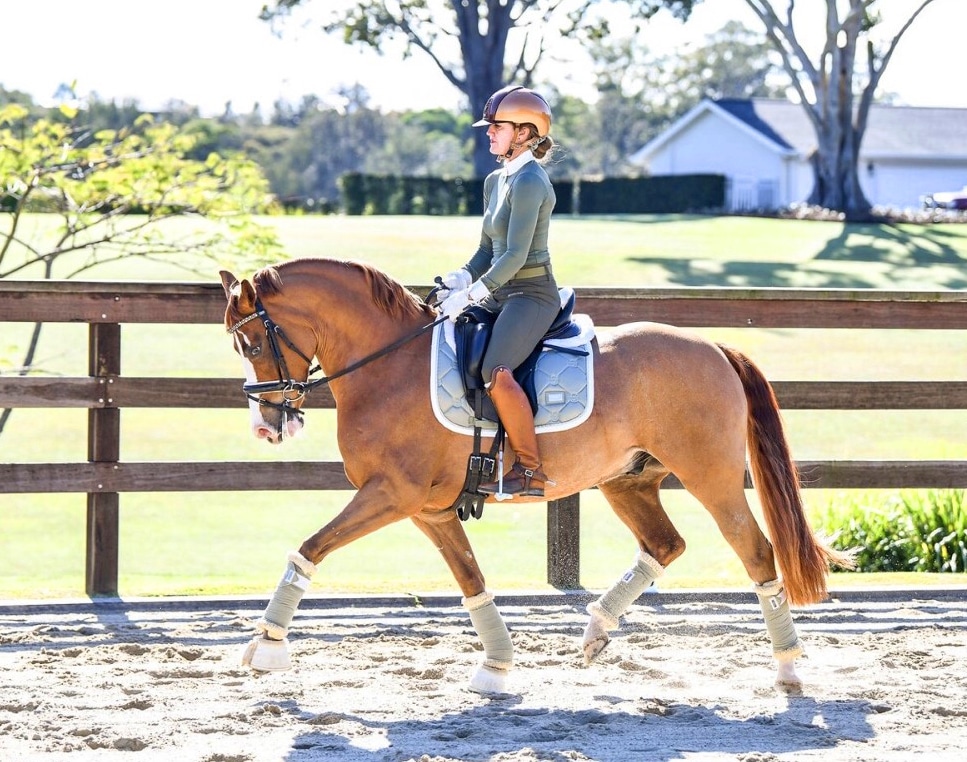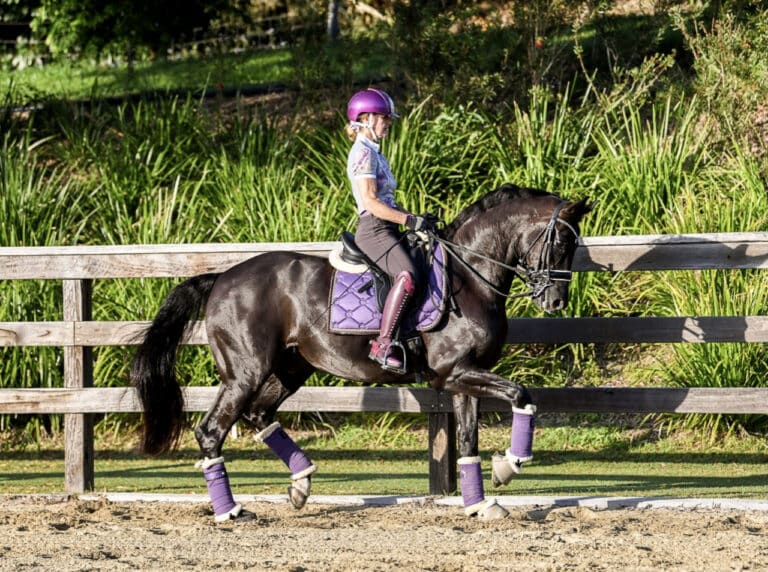Unpacking impulsion, the fourth step on the Training Scale, is an easily misunderstood concept with multiple layers of complexity, writes NICOLE TOUGH.
Impulsion is a single word that encompasses four abstract components, each as difficult to understand as the other:
- The horse’s desire to move forward: means the horse is readily available to move off into an energetic gait at the aids of the rider without hesitation, resistance or quickening before a transition.
- The elasticity of the steps: which refers to the ability of the joints in the legs to flex and extend.
- The suppleness of the back: referring to the arch in the horse’s topline. When this is achieved without tension, the horse’s tail will swing.
- The engagement of the hindquarters: referring to the hind legs coming more under the horse’s centre of gravity, which occurs as a result of the topline arch.
An easier way to understand impulsion is to think of a spring. The more compressed the spring, the more recoil we get, which influences pushing power and air time. Compression equals engagement. The more we can compress (engage) the horse, the more propulsion (generation of force through thrust) we can achieve. Through this compression, the horse’s balance is shifted more towards the hindquarters and they can propel energy into a longer, more upward thrust for medium and extended gaits.

Impulsion gives the impression of a springiness to the gaits, or in other words, increased suspension. For this reason, there can be no impulsion in walk, because there is no moment of suspension to influence in walk. That riders can influence this phase of suspension is a wondrous thing, and indeed a game changer in terms of their development. The question is, how do we achieve this?
Impulsion is like an onion and has many layers. It should be taught in stages and is continually developed all the way to Grand Prix level.
First, balance comes before impulsion. It is a common mistake, upon reading a judge’s comment ‘more impulsion’, to ride faster. It is easy for riders to push the horse out of balance and thus get the opposite effect of ‘running’. If the horse quickens the steps, the balance shifts towards the forehand and the gaits flatten, which only hinders the development of impulsion. Once we have the horse in balance, maintaining one rhythm through the basic gaits and their transitions, on prescribed lines, and in one self-carrying contact, we can begin to add the layers of impulsion.
Adding impulsion to a balanced trot and canter begins with lengthening and shortening the steps: on and back, repeated in every session, like an accordion instrument. The rider uses more leg to improve the energy without speeding up. And it must be the rider’s core that prevents this speeding up. This is the hard part – keeping the horse on the hindleg (i.e. in balance) through the rider’s core, and not with the reins.
To achieve this, riders must be in self-carriage as well, understanding and using the half halt aid effectively (the half halt being a moment of one stride, where the rider blocks the elbow and braces the upper body to influence the cycle of energy). An effective half halt should bring the horse more up, and in this moment, the rider uses the leg aids to create more energy. Now the horse is pushing and the rider is catching energy in the reins, in other words developing impulsion.
The next stage of developing impulsion in the trot and canter is teaching the correct reaction to the whip, used as a tap on the croup and near the tail in the right phase of the footfalls. The idea is for the horse to bounce up to the whip, creating a longer moment in the air. Do this for four to five steps in a row in trot and canter to develop these gaits. Again, I stress the importance of the rider not using their rein aids to block energy. The end goal is to achieve more impulsion without creating negative tension. The development of the rider’s core is vitally important to the success of developing more impulsion in the horse.

Many things contribute to the development of impulsion. At its heart is the understanding that it is hard, and it doesn’t happen overnight or even in a month. Every training session is a gym session, and the rider is the personal trainer. The horse must be given adequate time and proper training to develop the muscles of the topline to compress and recoil without tension. Obviously, if you can only train a few times a week, it will take longer than if you can train five times a week. And we mean training not just riding! Make every step and every transition in every session count.
Motivation gets you started. Discipline keeps you going.
Featured image: Owned by Nicole and her husband, German import Ferragamo demonstrates engagement of the hindquarters (Image by Christy Baker Photography).



